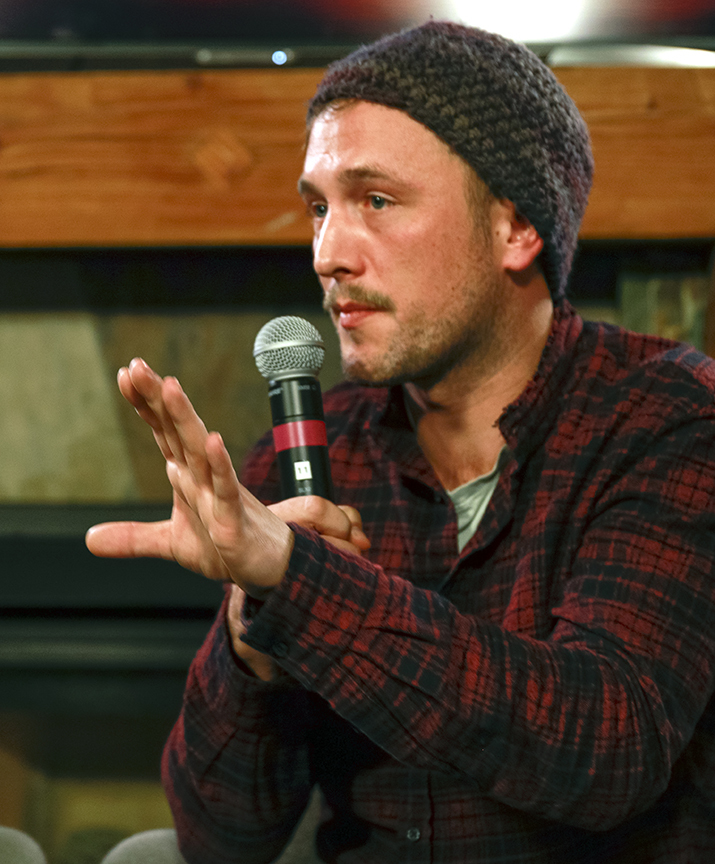
Sundance 2018 Panel: “Documentary Cinematography”
At the Canon Creative Studio on Main St. in Park City, three documentary cinematographers discussed the trials and tribulations of non-fiction production.

At the Canon Creative Studio on Main St. in Park City, three documentary cinematographers discussed the trials and tribulations of non-fiction production.
Filmmaking is always a challenge, but the challenges of documenting real life in a compelling and entertaining way can often be overwhelming.
In the mountains of Utah, amid frigid temperatures and flurries of snow, three documentary filmmakers gathered together for a discussion with myself at the Canon Creative Studio in Park City during the Sundance Film Festival. To a packed standing-room-only audience, we examined what it takes to capture compelling images to share a real-world story with a large audience.

On the panel were cinematographers Graham Willoughby, Laela Kilbourn and Max Preiss.
Willoughby is the director of photography behind Won't You Be My Neighbor, the story of Fred Rogers and the Mister Rogers’ Neighborhood children's television series.
Kilbourn is the cinematographer of This is Home: A Refugee Story, an intimate look at four Syrian refugee families and their first eight months acclimating to life in the United States.
Preiss photographed two projects at the festival. The first is The Cleaners, a dark look at how behind-the-scenes social media moderators for major platforms are controlling what you see. Preiss was also one of the three directors of photography on the Showtime series The Trade, a look at all sides of the global heroin crisis, which premiered at the festival.

During the lively panel discussion, Kilbourn discusses the challenges of filming with Syrian families who don't speak English entirely without translators while attempting to cover the right moments with a single camera. How do you know you've got what you need when you can't understand a word your subjects are saying and their cultural background makes their mannerisms, gestures and body language is completely different from anything you might commonly recognize?
“It was one of the more challenging projects I ever worked on,” she attests, “because these families were already overwhelmed by multiple things: they were coming from a traumatic experience at home; they were leaving family members and friends and their homes behind; they were arriving here not speaking the language not having much in the way of resources — and then we were asking them to pout a camera in their world...”

Willoughby notes that his interaction with documentary subjects is generally limited: “My primary concern is to provide as much room for the director to have their interaction with the subject so that it's natural and comfortable. Sometimes you have to put up a light or it is an uncomfortable or awkward at the time and I try to make myself as calming a presence and as comfortable a footprint as possible. I generally let the subject and the director have their first date and I'm just the maître d who comes in later and serves up a light and a camera...”
For his part, Preiss talks about being embedded with the Mexican drug Cartel for seven months and the challenges of getting heavily armed individuals involved in illegal activities in a narco war to trust you, as a filmmaker, and allow you to record their daily lives.
“What we did to gain trust was that we would always leave the camera in the car at first,” Preiss attests. “Then we would spend hours, days, maybe even weeks to get to know people — to show up again and again and gain their trust to finally, at one point, pull out the camera and say, 'Let's start filming now.'”
The discussion touches on many facets of documentary production including the long production schedules and need for small, fast equipment to adapt to many different situations. The filmmakers discuss the use of the Canon cameras, specifically the C300 and its flexibility, portability and use as documentary tool.
This panel discussion was live streamed via the AC Facebook page and can be seen here:
Go to our main Sundance page to find other discussions held at the Canon Creative Studio.






